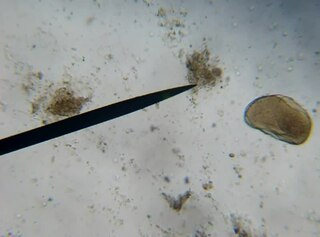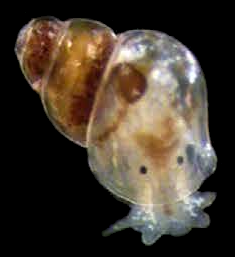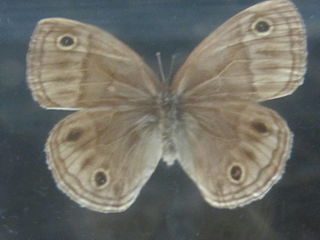
The opalines are a small group of peculiar heterokonts, currently assigned to the family Opalinidae, in the order Slopalinida. Their name is derived from the opalescent appearance of these microscopic organisms when illuminated with full sunlight. Most opalines live in the large intestine and cloaca of anurans, though they are sometimes found in fish, reptiles, molluscs and insects; whether they are parasitic is not certain. The unusual features of the opalines, first observed by Antonie van Leeuwenhoek in 1683, has led to much debate regarding their phylogenetic position among the protists.

Giuseppe Antonio Risso, called Antoine Risso, was a Niçard and naturalist.

Opalina is a genus of parasitic heterokonts found in the intestines of frogs and toads. They lack mouths and contractile vacuoles, they are covered with nearly equal flagelliform cilia, and they have numerous nuclei, all similar. All the species are obligate endosymbionts, most likely commensal rather than parasitic, in cold-blooded vertebrates. Its body is leaflike in shape. They lack cytostomes. They are saprozoic, consuming dead matter, which suggests their commensal role. They propagate by means of plasmotomy. The body is flattened, leaf-like and oval in outline and covered by thin pellicle. Nutrition is by pinocytosis. There are several small, spherical and similar sized nuclei present in the endoplasm. The nuclei are evenly distributed. The animal reproduces by longitudinal and transverse binary fission, or by plasmotomy in which the cell division is repeated again and again without division of nuclei. The daughter cells encysted and pass out in the faecal matter of the host.

Athyma opalina, the Himalayan sergeant, is a species of large, tailess nymphalid butterfly found in tropical and subtropical evergreen forest regions in Asia, ussualy at a elevation of 1200 meters to 3000 meters. A. opalina has a wingspan of 57 millimeters to 72 millimeters. Athyma oplina primary color is black with white as a associated color. Other colors on Athyma opalina include red, brown and orange.

John Gwyn Jeffreys FRS was a British conchologist and malacologist.
Notosetia is a genus of minute sea snails or micromolluscs, marine gastropod molluscs in the family Turbinidae.

Arhopala opalina, the opal oakblue, is a species of lycaenid or blue butterfly found in Assam, Burma, Thailand, the Malay Peninsula and Java.
Mesalia opalina is a species of sea snail, a marine gastropod mollusk in the family Turritellidae.

Mesalia is a genus of sea snails, marine gastropod mollusks in the family Turritellidae.
Nemophora opalina is a moth of the family Adelidae first described by Edward Meyrick in 1912. It is found in the Australian states of New South Wales and Queensland.

Setia is a genus of minute sea snails, marine gastropod mollusks or micromollusks in the family Rissoidae.

Rissoella is a genus of minute sea snails, marine gastropods, in the family Rissoellidae.

Palaeonympha is a monotypic butterfly genus of the subfamily Satyrinae in the family Nymphalidae. Its one species, Palaeonympha opalina, is found in Taiwan and China.
Anthene opalina, the opal hairtail, is a butterfly in the family Lycaenidae. It is found in southern Ethiopia, Somalia, northern and eastern Kenya and Tanzania. The habitat consists of dry savanna.
Metallolophia opalina is a moth of the family Geometridae first described by William Warren in 1893. It is found in Xizang, China.

Calophasia opalina is a moth of the family Noctuidae first described by Eugenius Johann Christoph Esper in 1793. It is found from Southern Europe to Central Asia.
Dichomeris opalina is a moth in the family Gelechiidae. It was described by Jean Ghesquière in 1940. It is found in the former Équateur province of the Democratic Republic of the Congo.

Hadromeropsis opalina is a species of broad-nosed weevil in the beetle family Curculionidae. It is found in North America.

Rissoella verruculosa is a species of red algae, the only accepted species in the genus Risoella and the family Rissoellaceae. This species is endemic to the Mediterranean Sea.













